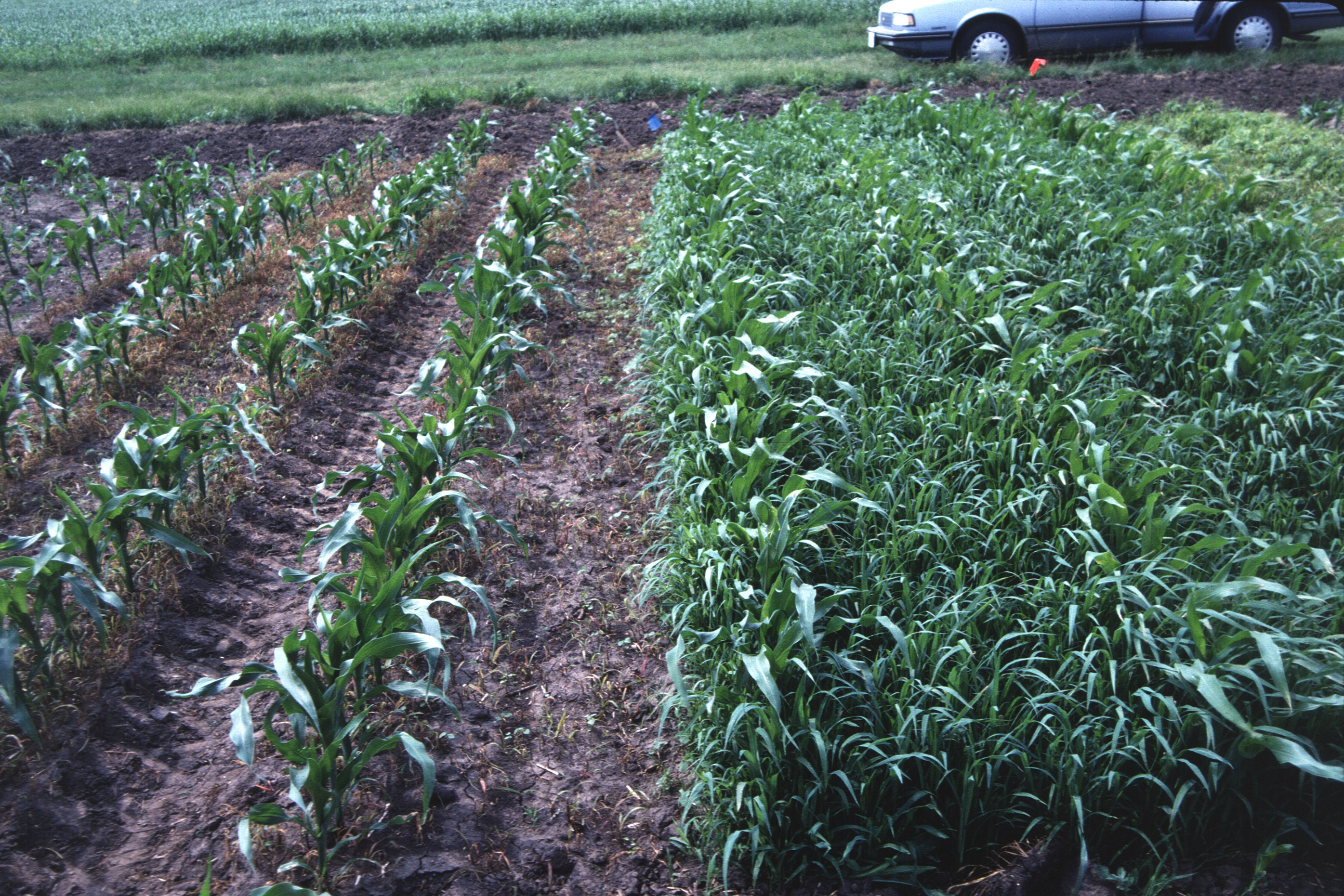Chapter 1: What is a Weed? Why Do We Care?
Chapter Authors
Dr. Deana Namuth-Covert, Professor and Ms. Amy Kohmetscher, Instructional Designer
Ohio State – Agricultural Technical Institute
College of Food, Agricultural and Environmental Sciences
The Ohio State University

Photo by Doug Buhler. Provided by USDA-ARS photo library
We all know that weeds are bad for crops and even have some general ideas as to why. Some estimates suggest weeds cause 12% crop yield loss in the United States alone, costing $32 billion in damage. Estimated costs of methods to control weeds are in the billions of dollars, with $6.6 billion allocated to the application of herbicides alone. Most people are surprised to learn that weeds are actually quite dynamic and ever changing, adapting to a variety of control methods utilized by farmers, which makes their control so costly and complex. In this eBook, we focus on agronomic principles of effective and sustainable weed management to help ensure the safe and cost effective production of our world’s food, feed and fiber needs. We will describe how to identify weeds and will also provide a variety of control strategies based on peer reviewed research and extension findings for you to consider. We hope you enjoy the journey with us and gain a greater understanding of weeds.
In this first chapter, we will start at the beginning with what exactly is a weed? We will look at what effects weeds can have on field crops, including both indirect and direct costs.